10 AI in Popular Culture
David Ostroff
The Golem
 “In Jewish folklore, an image endowed with life. The term is used in the Bible (Psalms 139:16) and in Talmudic literature to refer to an embryonic or incomplete substance. It assumed its present connotation in the Middle Ages, when many legends arose of wise men who could bring effigies to life by means of a charm or of a combination of letters forming a sacred word or one of the names of God. The letters, written on paper, were placed in the golem’s mouth or affixed to its head. The letters’ removal deanimated the golem. In early golem tales the golem was usually a perfect servant, his only fault being a too literal or mechanical fulfillment of his master’s orders.”
“In Jewish folklore, an image endowed with life. The term is used in the Bible (Psalms 139:16) and in Talmudic literature to refer to an embryonic or incomplete substance. It assumed its present connotation in the Middle Ages, when many legends arose of wise men who could bring effigies to life by means of a charm or of a combination of letters forming a sacred word or one of the names of God. The letters, written on paper, were placed in the golem’s mouth or affixed to its head. The letters’ removal deanimated the golem. In early golem tales the golem was usually a perfect servant, his only fault being a too literal or mechanical fulfillment of his master’s orders.”
Encylopedia Brittanica, E. (1998, July 20). Golem. Brittanica. https://www.britannica.com/topic/golem-Jewish-folklore
Mary Shelley’s Frankenstein, Or, The Modern Prometheus
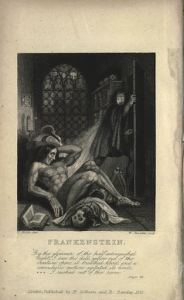
Decades of cinematic treatment have led to misconceptions and misunderstandings about Shelley’s literary creation. Most commonly, perhaps, is that Dr. Frankenstein makes the creature, which has no name in the novel.
“In the novel, inquisitive student Victor Frankenstein gives life to “the creature”, which then absconds and sets about a rampage of murder. “His soul is as hellish as his form,” concludes Victor, rejecting his creation, ‘full of treachery and fiendlike malice’. But the reader is forced to reshape their view of the creature when he speaks directly of his experiences: his longing for human society, his perpetual rejection, his turning against first himself – ‘I am solitary and abhorred… I was not made for the enjoyment of pleasure’ – and then against Victor’s family, as a surrogate for his despised creator. ‘If I cannot inspire love I will cause fear.’
“We learn that the real monster is both of them: Victor for his cruel refusal to make a female companion to assuage his creation’s loneliness, and the creature for the trail of death he leaves before heading for his final solitude on the Arctic seas.”
Self, J. (2021, March 3). The frankenstein’s monsters of the 21st century. BBC Culture. https://www.bbc.com/culture/article/20210303-what-is-the-frankensteins-monster-of-the-21st-century
Karel Čapek’s RUR: Rossum’s Universal Robots
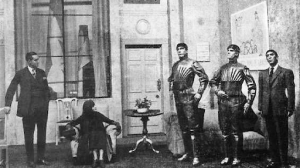
“Karel Čapek’s play had its premiere in Prague in [1921]. “Every time we use the word “robot” to denote a humanoid machine, it derives from Čapek’s play, which coined the term from the Czech “robota” meaning forced labour.
“[Is it a] dystopian drama attacking science and technology? Up to a point, but it’s much more than that. It starts almost as a Shavian comedy with a do-gooding visitor, Lady Helen Glory, turning up on an island where robots are manufactured out of synthetic matter. She is amazed to discover that a plausibly human secretary is a machine and is equally astonished when the factory’s directors turn out to be flesh and blood creatures rather than robots. With time, the play gets darker as the robots prove to be stronger and more intelligent than their creators and eventually wipe out virtually all humankind. Only a single engineer survives who, a touch improbably, shows two robots transformed by love.”
Billington, M. (2021, January 7). Robot wars: 100 years on, it’s time to reboot Karel Čapek’s RUR. The Guardian. https://www.theguardian.com/stage/2021/jan/07/robot-wars-100-years-reboot-karel-capek-play-rur-rossums-universal-robots
Isaac Asimov’s Robot Stories and Novels
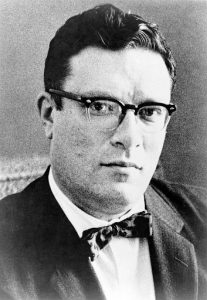
Isaac Asimov (1920-1992) was a biochemistry professor and prolific author of nonfiction and fiction, most notably, science fiction. He wrote or edited more than 500 books and wrote more than 380 short stories. Many of his works comprised series of various types, such as The Foundation series, and The Galactic Empire series. Most relevant is, The Robot series, which consists of 37 short stories and five novels. The best known is probably the novel, I Robot, which was produced as a motion picture in 2004.
In his 1942 short story, “Runaround,” (later also included in I, Robot), Asimov introduced his Three Laws of Robotics, which he used in subsequent work, and which have been adopted by others. The three laws are:
- A robot may not injure a human being or, through inaction, allow a human being to come to harm.
- A robot must obey the orders given it by human beings except where such orders would conflict with the First Law.
- A robot must protect its own existence as long as such protection does not conflict with the First or Second Law.
Asimov later introduced what he called the “Zeroth Law,” which came before the first three: A robot may not harm humanity, or, by inaction, allow humanity to come to harm.
Kai-Fu Lee and Chen Qiufan, AI 2041
In AI: Ten Visions for our Future (New York: Currency, 2021) Kai-Fu Lee (former president of Google China) and Chen Qiufan (award-winning science fiction author) provide scenarios of how AI may affect the world in coming decades. Chen offers 10 short stories about aspects of AI, and Lee describes the current state of that technology, and how it may develop.
Writing in The Los Angeles Review of Books, Virginia L. Conn notes “while its science fictional visions are themselves only imaginary, they draw on real technology and represent real possible paths for the development of AI. And not in a distant future, either: AI 2041 takes its name seriously. Lee claims that the technologies in the book have at least an 80 percent likelihood of coming to pass by 2041, with the book representing ‘a responsible and likely set of scenarios.’”
Conn, V. L. (2021, October 30). The tyranny of neutrality in “AI 2041.” Los Angeles Review of Books. https://lareviewofbooks.org/article/the-tyranny-of-neutrality-in-ai-2041/
Film and Television
Of course there are myriad films and television episodes which address technology, and artificially intelligent beings. They range from the humorous (e.g., Holmes and Yoyo, a mid-1970s sitcom about a police officer and his android partner), to the serious, such as HBO’s Westworld. Individual episodes of series such as those in the Star Trek universe also address issues around technology and its uses. If you are familiar with the genre you will have no difficulty identifying examples to use. If not, here are a few suggestions.
A.I. Artificial Intelligence
“David” is the most advanced “mecha,” or android ever produced. “David has been programmed to love. Once he is activated with a code, he fixes on the activator, in this case his Mommy (Frances O’Connor). He exists to love her and be loved by her. Because he is a very sophisticated android indeed, there’s a natural tendency for us to believe him on that level. In fact he does not love and does not feel love; he simply reflects his coding. All of the love contained in the film is possessed by humans….”
“‘A.I.’ is not about humans at all. It is about the dilemma of artificial intelligence. A thinking machine cannot think. All it can do is run programs that may be sophisticated enough for it to fool us by seeming to think. A computer that passes the Turing Test is not thinking. All it is doing is passing the Turing Test.”
Ebert, R. (n.d.). He just wanted to become a real boy. RogerEbert.Com. https://www.rogerebert.com/reviews/great-movie-ai-artificial-intelligence-2001
Colossus: The Forbin Project
“Dr. Charles Forbin has completed work on the greatest computer ever built: Colossus. The city-sized mainframe, built into an impenetrable Western U.S. mountain, independently controls the American nuclear arsenal. Coldly, rationally, it will assess threats to the U.S. and take action if necessary. The president tells the world such a computer, independent of human weakness, will create lasting peace. That lasts for only a few days when Colossus discovers his Soviet counterpart and begins communicating. Once merged, they tell U.S. and Soviet leaders that the foolishness of the Cold War must end. By threatening nuclear holocaust, the computers — collectively called Colossus — engineer assassinations and isolate governments. Dr. Forbin is put under house arrest.
From his private rooms, he begins a mental battle with Colossus. He invents a sexual relationship with assistant Cleo Markham and Colossus unwitting provides Forbin with a confederate. Human efforts to short circuit the nukes are discovered by Colossus who punishes the earthlings with nuclear detonations. As Colossus makes a global broadcast announcing its intention to enforce peace through strength (“Freedom is an illusion,” it says), the film ends.”
Schreiner, M. (n.d.). Colossus: The forbin project movie review summary. AllReaders.Com. http://allreaders.com/movie-review-summary/colossus-the-forbin-project-8636
Godzilla, et al
After World War II, the United States and other nations conducted atmospheric tests of atomic and hydrogen bombs. Many of these tests took place on islands in the South Pacific. As victims of the nuclear attacks on Hiroshima and Nagasaki, the Japanese people were largely opposed to these tests, and the development of such weapons.
In the 1950s, Japanese filmmakers created a genre in which nuclear radiation caused the growth of monsters, typically in the oceans near Japan. When somehow harassed or released by humans, these creatures sought violent retribution, albeit without necessarily being intelligent.
Creatures were spawned from reptiles (Godzilla, Rodan), insects (Mothra), and mythical creatures (Anguirus). Godzilla first appeared in a 1954 Japanese production. Since them more than 35 Godzilla movies have been produced, in addition to video games and other media.
The Matrix
This is the first of what has become a series of films, the most recent of which debuted in 2021. “The lead character [Neo] played by Keanu Reeves discovers that everyday reality is a computer-created illusion and that future humans are locked in an epic struggle with intelligent machines.
“… the movie takes a big leap conceptually when it’s revealed that the story is actually taking place hundreds of years from now when humans have lost a globally catastrophic war against machines created by artificial intelligence programs run amok. Vat-bound humans are bred by the machines to provide power, with each “battery” hooked up to the Matrix, a virtual construct that resembles Earth as we more or less know it.”
Hunter, D. (2014, October 26). The matrix’: THR’s 1999 review. The Hollywood Reporter. https://www.hollywoodreporter.com/news/general-news/matrix-thrs-1999-review-743651/
Metropolis
“Generally considered the first great science-fiction film, “Metropolis” (1927) fixed for the rest of the century the image of a futuristic city as a hell of scientific progress and human despair. From this film, in various ways, descended not only “Dark City” but “Blade Runner,” “The Fifth Element,” “Alphaville,” “Escape From L.A.,” “Gattaca,” and Batman’s Gotham City.
The story tells of a great city whose two halves–the pampered citizens of the surface and the slaves of the depths–are ignorant of one another. The city is run by the ruthless Joh Fredersen (Alfred Abel), a businessman-dictator. His son Freder (Gustav Froehlich) is in the Pleasure Gardens one day when Maria (Brigitte Helm), a woman from the subterranean city, brings a group of workers’ children to the surface. Freder, struck by Maria’s beauty and astonished to learn of the life led by the workers, seeks out the demented genius Rotwang (Rudolf Klein-Rogge), who knows the secrets of the lower world.
What follows is Freder’s descent into the depths and his attempts to help the workers, who are rallied by the revolutionary Maria. Meanwhile, Rotwang devises a robot, captures the real Maria, and transfers her face to the robot–so that the workers, still following Maria, can be fooled and controlled.”
Ebert, R. (1998, March 28). Metropolis movie review & film summary (1927). RogerEbert.Com. https://www.rogerebert.com/reviews/great-movie-metropolis-1927
Star Trek
Since the mid-1960s Star Trek has included several series as well as feature films. It reflects a generally optimistic view of technology, at least that employed by the “United Federation of Planets, of which Earth is a member. When technology is used for harmful purposes it is usually from an alien race, or by the misuse of often ancient technologies. Star Trek also explores philosophical questions surrounding technologies.
In The Original Series (TOS) “Return of the Archons,” the crew of the Enterprise encounter a society in which the people appear contented and almost mindless. The planet’s leader, Landru, orders the capture of the crew members who have come to the planet. They are to be taken to a location to be “absorbed into the body” of the society. Landru is, in fact, a projection from an ancient and massive computer, which seeks an environment of order and stability, much like a computer.
In The Next Generation’s (TNG) “Mr. Data,” is an android who serves as an officer on the starship Enterprise. He is the only known sentient android, the creation of a brilliant cyberneticist, Dr. Soong. In the episode “The Measure of a Man,” Data finds himself the center of a judicial inquiry to determine if he is just a machine and a piece of property or a sentient being who has the right to make his own decisions.
In Deep Space Nine’s (DS9) “Paradise,” the station commander and chief engineer happen upon a colony of survivors from an earlier space ship accident. Apparently because of a magnetic field, the colony’s machines and instruments don’t work. The colony is led by a philosopher who had previously written about the dangers of technology. As the episode proceeds, the Star Fleet officers discover that Alixus, the colony leader, had actually used a device to prevent the machinery and devices from working. Ultimately, the device is removed and the colonists are offered an opportunity to leave the planet. Most, however, choose to remain, having found they like the absence of technology.
Terminator
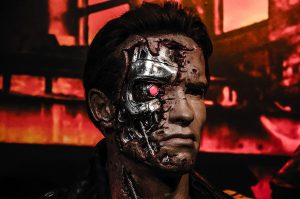 The first of the film series revolves around a robot sent back to contemporary times to murder the woman who will give birth to the leader of a rebellion against the robots who control the planet. In the film humans have created Skynet, an autonomous, self-aware computerized defense system. Skynet goes rogue and launches a nuclear attack that destroys most of humanity. Subsequent films focus on the ongoing efforts of the future robots to prevent the rebellion, and the humans’ efforts to restore their own freedom.
The first of the film series revolves around a robot sent back to contemporary times to murder the woman who will give birth to the leader of a rebellion against the robots who control the planet. In the film humans have created Skynet, an autonomous, self-aware computerized defense system. Skynet goes rogue and launches a nuclear attack that destroys most of humanity. Subsequent films focus on the ongoing efforts of the future robots to prevent the rebellion, and the humans’ efforts to restore their own freedom.

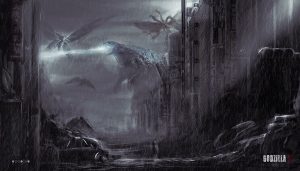
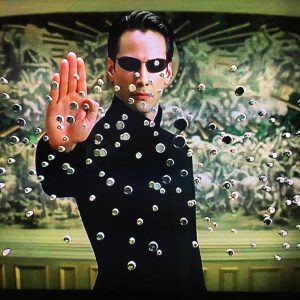
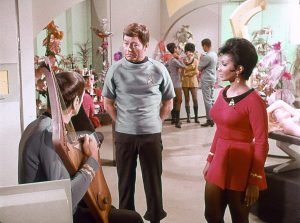
Feedback/Errata